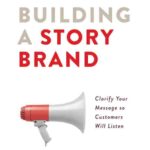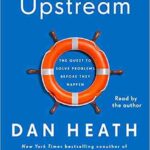Many people—and businesses, too—don’t fully grasp the difference between an asset and a liability. This might seem like Finance 101, but misconceptions are incredibly common. Ask someone what their biggest asset is, and more often than not, they’ll say, “my house.” On the surface, that seems reasonable. A house is valuable, it appreciates over time, and it often forms the cornerstone of a person’s net worth.
But here’s the problem: according to financial literacy thought leaders like Robert Kiyosaki, an asset isn’t just something of value—it’s something that puts money into your pocket. A liability, by contrast, takes money out of your pocket. Using this more functional definition, your home isn’t an asset. It’s a liability. Why? Because it costs you money in the form of mortgage payments, maintenance, taxes, and insurance. It doesn’t generate income unless it’s rented out or otherwise monetized.
In fact, your home is actually an asset for someone else: your lender. The bank earns interest on the mortgage and holds a claim on the property until the debt is fully paid. So while you may call it your biggest asset, they’re the ones benefiting financially—at least until you own it outright or begin to generate cash flow from it.
And this misinterpretation extends into the business world as well.
In 1999, I sold my business to Interleaf—a public company—and was hired to manage its services division. Over the course of a few years, we scaled that division from $8 million in annual revenue to over $32 million. From a revenue standpoint, that’s massive growth. The division had active service contracts bringing in recurring revenue—contracts that I viewed as major assets.
However, when the Interleaf was acquired by another public firm, the new leadership had different priorities. The board decided to shut down our entire division. That meant those $32 million in service contracts were no longer considered valuable—they were considered a liability. Why? Because fulfilling the contracts would require staffing, support infrastructure, and possibly legal resources. And canceling them meant risking lawsuits for breach of contract.
In a surprising twist, the company paid me to take over the contracts. Yes, you read that right—they saw these contracts as such a burden that they were willing to pay to have them removed from their books. Meanwhile, I viewed them as pure opportunity. I gladly accepted the deal—but truth be told, I would’ve paid them to acquire those contracts.
Related Post: Beyond Numbers: Unlocking the Hidden Value of Your Business
It was a real-life demonstration that one man’s asset is another man’s liability. The lesson? Context matters. How you classify an asset or liability depends on what you’re trying to accomplish.
This type of misjudgment is more than theoretical—it can be financially disastrous. Many business owners look only at what something costs them to acquire and not what it produces in return. A company might pour thousands into machinery or software, thinking it’s an asset, but if it sits idle or goes unused, it’s functionally a liability.
This is where knowing your cash flow is essential. If a piece of equipment reduces labor costs or increases productivity, it’s likely an asset. If it’s gathering dust in a storage closet, it’s a sunk cost—and likely a liability. Similarly, employees, marketing campaigns, and even partnerships should all be evaluated not by how they look on paper, but by how they impact your bottom line.
It’s also worth noting that publicly traded companies often treat their balance sheets with a particular lens—one that emphasizes short-term shareholder value. That means what should be considered an asset, like long-term customer relationships or recurring contracts, might instead be seen as a future legal risk, PR nightmare, or resource drain. It all depends on how that organization is structured and what outcomes it prioritizes.
So, what can entrepreneurs and small business owners take from this?
- Assets aren’t always physical. Contracts, subscriptions, intellectual property, and customer relationships can be tremendous assets—if they generate reliable revenue.
- Don’t be fooled by sunk costs. Just because something was expensive doesn’t make it valuable.
- Always assess from a cash flow lens. Does this item, person, or decision put money in your pocket—or take it out?
Understanding the difference between assets and liabilities isn’t just for accountants. It’s foundational to smart decision-making in both personal finance and business. When you know what’s helping you move forward—and what’s dragging you down—you make better choices.
So, do you truly know your assets from your liabilities?












